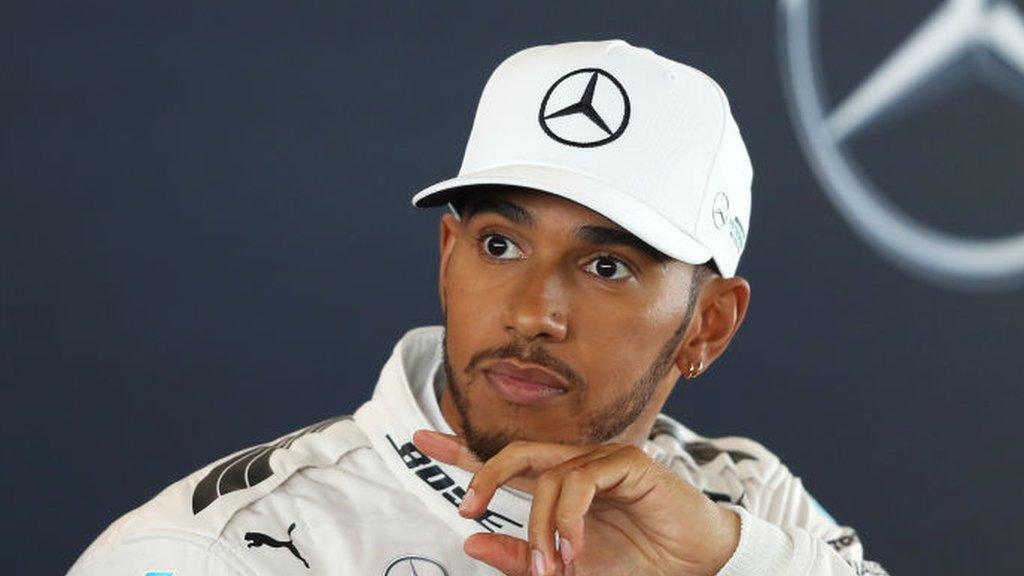F1 testing round-up: Have Ferrari really got the measure of Mercedes?
- Published
- comments
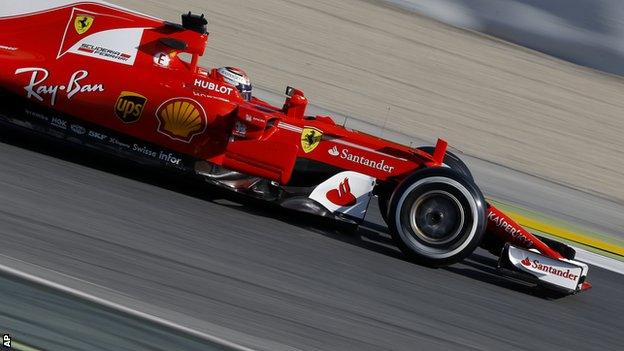
Ferrari F1 driver Kimi Raikkonen finished the final day of pre-season testing fastest in Barcelona
Want a headline from two weeks of Formula 1 pre-season testing? Here it is: Ferrari look like genuine challengers to world champions Mercedes. They might even be faster.
Two weeks before the season-opening Australian Grand Prix, that is the inescapable conclusion from the best evidence after eight days of testing at Spain's Circuit de Barcelona-Catalunya.
The usual caveats apply - it's very hard to determine an exact competitive order from testing because the teams do not reveal the specifications their cars are running in, and variables such as fuel load and engine mode make a huge difference to performance.
But while there is inevitably a margin for error in every assessment made on the basis of testing, some things are clear - the Ferrari looked good out on track, and its lap times were genuinely impressive. Even Mercedes driver Lewis Hamilton said so.
Hamilton and Ferrari's Sebastian Vettel each said that the other's team was probably in the best shape.
For leading F1 drivers, kidology is part of the job description. So who is closest to telling the truth?
Dissecting the lap times
Ferrari's Kimi Raikkonen set the fastest time of the winter on the final day of testing while doing a qualifying simulation run on super-soft tyres.
The best Mercedes lap of the winter was 0.676 seconds slower. According to the official timing, even Mercedes' best 'perfect' lap — i.e. with all the best sectors a driver achieved on a given day added together - was 0.406secs off Raikkonen's time.
Now let's see if we can get behind those lap times a little. First of all, the list of absolute fastest times by each team over the two weeks of testing:
1. Ferrari (Raikkonen) 1:18.634 (super-soft tyre)
2. Mercedes (Valtteri Bottas) 1:19.310 (ultra-soft)
3. Williams (Felipe Massa) 19.420 (ultra-soft)
4. Red Bull (Max Verstappen) 1:19.438 (super-soft)
5. Toro Rosso (Carlos Sainz) 1:19.837 (ultra-soft)
6. Renault (Nico Hulkenberg) 1:19.885 (ultra-soft)
7. Force India (Sergio Perez) 1:20.116 (ultra-soft)
8. Haas (Kevin Magnussen) 1:20.504 (ultra-soft)
9. McLaren (Stoffel Vandoorne) 1:21.348 (ultra-soft)
10. Sauber (Marcus Ericsson) 1:21.670 (super-soft)
That list does not take into account any number of potential variables, one of which is the fuel loads in the cars.
It is possible to eliminate the fuel variable to a degree by correcting for the length of the run, and therefore the minimum amount of fuel the car must have had.
Then, look beyond each team's absolute fastest to other times set on other tyres, and correct the times to ones for a 'soft' tyre, which is the quickest one that will be used at the Barcelona race, and the list of fastest times each team achieved looks like this:
1. Ferrari 1:19.0
2. Mercedes 1:19.8
3. Red Bull 1:19.8
4. Williams 1:20.4
5. Toro Rosso 1:20.9
6. Renault 1:21.0
7. Force India 1:21.2
8. Haas 1:21.4
9. Sauber 1:22.0
10. McLaren 1:22.3
Interestingly, Ferrari's advantage grows under this comparison - and it's now so big that it surely cannot be real. More of which in a moment.
But the bottom line is that Ferrari look very strong, that the headline lap times were highly impressive and their long runs were equally good.
The general conclusion from asking around among the teams is that Ferrari are at least level with Mercedes and possibly slightly ahead.
Why do Ferrari look so quick?
At least some of Ferrari's apparent strong form might be coming from the fact that Mercedes are still not consistently comfortable with their car.
"We have had so many different upgrades," Mercedes' Valtteri Bottas said. "And, OK, yes, maybe some of them haven't been perfect. Some have been over-performing, some have been maybe slightly under-performing.
"It's been affecting the car balance, things like that. Once you put new stuff into the car, it's not like it's suddenly better. There's some things that we definitely need to unlock."
Until Ferrari's pace is revealed in actual competition, there will inevitably be scepticism about what they can achieve, given their record of underachievement in recent years.
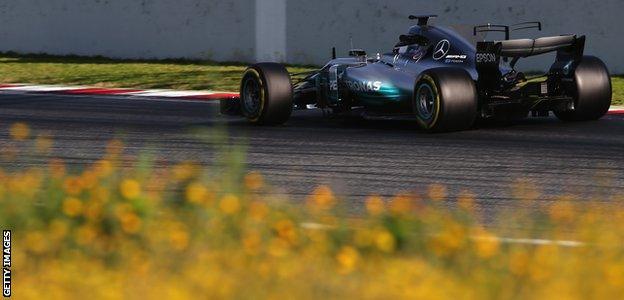
Mercedes and Ferrari are close in the timesheets but true pace will only reveal itself in Melbourne
Last season, for example, Ferrari looked to be about 0.3secs behind Mercedes in testing - and Hamilton was 0.8secs quicker than them in qualifying at the first race in Melbourne.
The balance of evidence over the last few years is that Red Bull and Mercedes run their cars heavier on fuel in testing than Ferrari - perhaps by as much as 30kg.
This is what Vettel was referring to when he said on Thursday: "If you look at the amount of laps Mercedes has done, if you look historically how slow they go in the testing, how much they were able to ramp it up for the races, it's clear. They're very fast if you look at their long-run pace. They're the ones to beat."
If there was a 30kg difference in the fuel weights of the Mercedes and Ferrari at all times, that would suggest the cars are pretty equal, since 10kg of fuel equates to 0.35secs a lap at Barcelona.
If that's the case, Ferrari have made an almighty leap from a 2016 in which they did not win a race and seemed in disarray - and there have been too many false dawns at Maranello for anyone to get carried away right now.
On the other hand, the basis of this car was laid down before the team split with former technical director James Allison in July last year. So it's not impossible Allison - who is now in the same role at Mercedes - led the design of a fundamentally good car, and a restructured team has since added the finishing touches.
Bottas says he will race Hamilton
Ferrari are said to have made a significant step forward in engine performance over the winter, too.
Equally, perhaps Mercedes have been caught out a little by the new rules - including a clarification over the winter on the use of clever hydraulic suspension systems that help keep the cars stable in cornering and on which they led the way.
Whatever is behind it, so far the evidence adds up to the likelihood of a genuinely competitive start to the season.
What about Red Bull?
Red Bull had looked in the ballpark with Ferrari and Mercedes until Thursday this week, when Daniel Ricciardo was out on a race-simulation run at the same time as Vettel. The Australian's average lap time was a massive one second slower than the German's.
"We certainly have not showed Ferrari's pace yet," Ricciardo said. "So if you were going to put some markers down tonight you would say Ferrari at the moment are their [Mercedes'] closest challenger. That is fair.
"At the moment they look like they are pretty close to Mercedes pace, if not on it. So it is going to make Melbourne interesting, and I think we will get there."

Red Bull showed strong pace at times but their ability to compete with Ferrari and Mercedes is in question
Red Bull very rarely look especially strong in testing - even through their dominant era in the early years of this decade you had to look very hard for evidence of the car's pace in the winter.
Add in that Red Bull looked stronger again on the final day, and the belief that they have a big update package coming for the first race of the season, and no-one is counting them out yet.
Red Bull's biggest concern may well be a reliability problem in their Renault engine, which was running detuned in testing.
Overheating of the MGU-K, which recovers energy from the rear axle, caused failures for all three of Renault's teams - Red Bull, Renault and Toro Rosso - over the course of testing and must be a concern for the first race, regardless of the fact that they say they have a fix for it.
Palmer's guide to the new F1 cars
Behind Red Bull - quite a long way behind them - the midfield battle looks tight.
Williams appear to be at the front of it, with the biggest performance leap from the works Renault team, who look to have moved up after their dismal 2016.
Not a crisis? Really?
McLaren-Honda entered this season hoping the change in rules, and an engine redesign, would allow them to make ground on Mercedes. But their pre-season has been a horrendous catalogue of reliability failures.
So frail has the Honda engine been that it has proved impossible to get any read on the car's potential competitiveness.
McLaren executive director Zak Brown denied in an interview during the final test that the team was facing a crisis - a description used by this writer last week, and by others since.
"Clearly we have problems," he told Sky. "But crisis is a bit strong."

McLaren driver Fernando Alonso has been critical of the Honda engine's power and reliability during testing
Is it? Crisis is defined in the Oxford English Dictionary as "a time of intense difficulty or danger" and "a time when a difficult or important decision must be made". Which sounds about as accurate a description of McLaren's situation as you could get.
This is the third year of Honda's return to F1 and it promised that by the start of this season it would at least have matched the power produced by the Mercedes engine last season.
But they are miles away from that. And even if the power was close, reliability is shocking.
The car only did more than 50 laps in a day once this week - and only three times in eight days. Mercedes were routinely doing 150+ in a day. The most flying laps the McLaren ever did in a row was 11. Yes, 11. That's one-sixth of a race distance.
McLaren and Honda have a 10-year contract, but right now it is hard to see how the relationship can run that long.
There is no evidence that Honda knows how to get out of this situation. And while the Japanese company provides a huge amount of budget to McLaren - close to a net $100m compared with buying a customer engine, when everything is taken into account - how long can McLaren let it continue before it does serious damage to the team?
As for lead driver Fernando Alonso, one can only imagine what is going through his head right now.
The two-time world champion left Ferrari at the end of 2014 because he had lost faith - after five seasons in which he made them look better than they really were, including two title near-misses - that they would ever be in a position to enable him to win another title.
So far, he has been able to console himself with the thought that he was right.
When he made his decision to leave, he had a contract to the end of 2016, but Ferrari had offered him an extension, which he turned down.
So imagine the purgatory Alonso will be in if this is the year Ferrari finally deliver on their promise, while a man who has won 32 grands prix and is unarguably one of the finest drivers in history is still wasting his time towards the back of the grid.

- Published10 March 2017
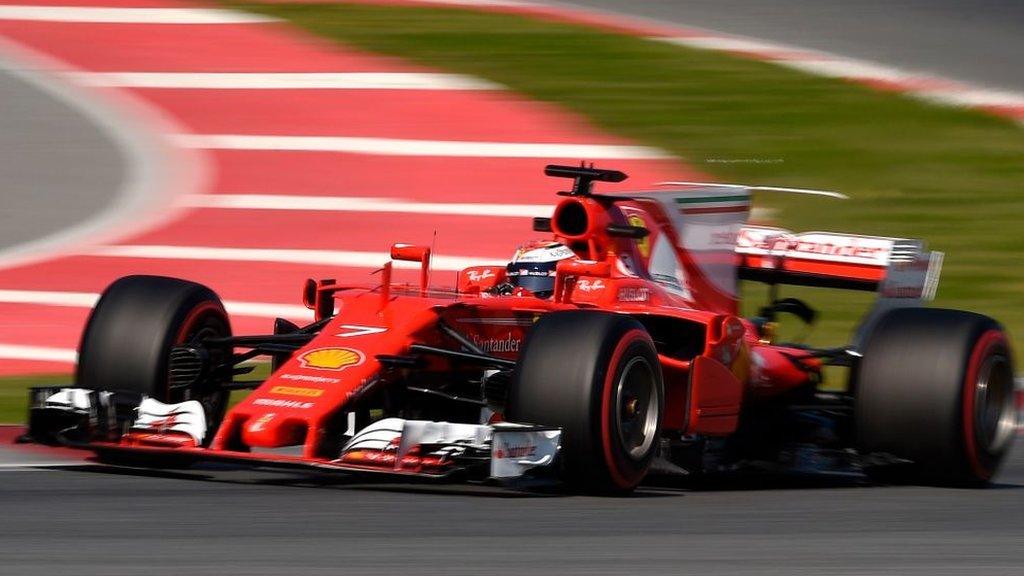
- Published9 March 2017
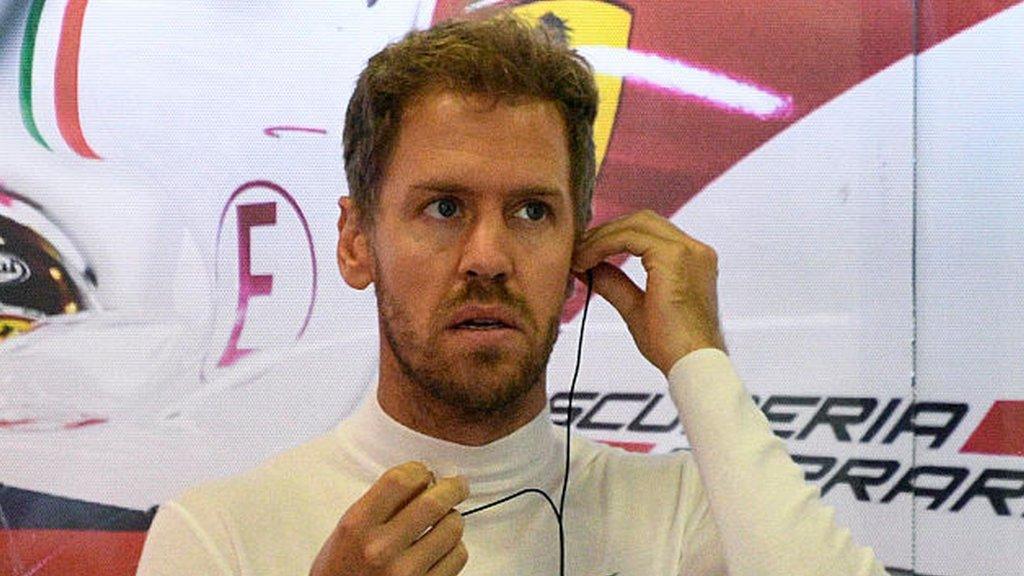
- Published8 March 2017

- Published7 March 2017
